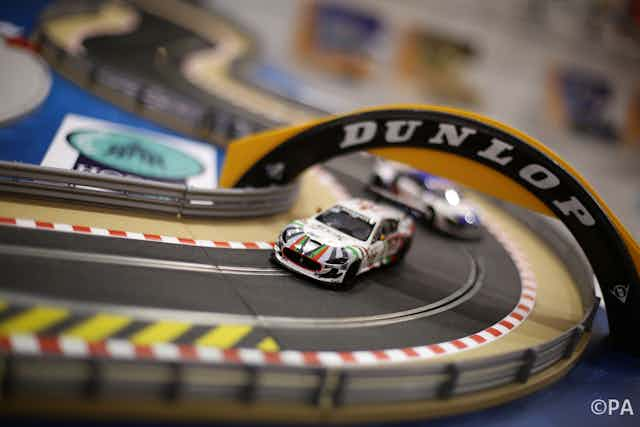It was Tesla Motors, more than any other company, that triggered the current interest in electric cars. The firm’s namesake, Nikola Tesla, a genius inventor and Thomas Edison’s arch rival, would no doubt be pleased. Yet Tesla would be even more thrilled to realise the next step for electric vehicles involves turning his biggest vision into reality: the wireless transmission of power.
Due to their low local emissions, battery-powered electric cars are more in demand than ever, but they still have a reputation for being too expensive and having too short a driving range. So how about recharging them without having to plug in a cable, while parking or even driving on the road?
This isn’t science fiction: we know from our electric tooth brushes that batteries can be recharged without plugging in a wire, and even smart phones can be charged just by being placed on top of a pad.

Here’s how it works: an alternating current (AC) flows through a wire coil (the transmitter), which causes a magnetic field to switch between two directions at a high frequency. A second coil (the receiver) exposed to that magnetic fields picks up those oscillations, inducing an AC current in its own circuit, which is then used to power the car (or charges the battery in your toothbrush).
Electronic systems able to handle higher frequencies, which allow more power to be transmitted, are becoming more affordable. Energy can now be transferred between coils that are increasingly further apart or aren’t aligned accurately.
Thanks to this technology, some electric cars can already be charged by parking them on top of charging pads, which can be as much as 20cm away from the receiving coil at the bottom of the vehicle. The next step is to wire-up the roads themselves with coils so that cars, buses, and even trucks could be charged while they move.

For peace of mind, wireless charging systems are properly shielded so that no animals or humans will be harmed. A coil in the road will only emit power when it is in wireless communication with a receiver coil above it, and the latter will absorb nearly all of it. The bit that is lost is mostly absorbed by the metal body of the car itself.
The path to wired-up roads
Retrofitting roads with wireless charging coils sounds expensive. But recent studies show that the biggest part of the cost comes from the construction work itself – on a new or renovated road, the extra costs are not that high.
Charging on the move isn’t just a convenient time-saver – it will also bring down the cost of electric vehicles themselves. Batteries that get recharged more frequently during usage will last longer and can be made smaller while retaining the same driving range.
As with all new technologies that rely on not-yet existing infrastructure, wireless vehicle charging will start in a niche market (remember the early and expensive days of mobile phones?). In this case, the niche is electric buses that re-charge at bus stops and on certain segments of their fixed driving route.
The global pioneer is the Online Electric Vehicle (OLEV), a bus developed a few years ago by South Korea’s Advanced Institute of Science and Technology (KAIST). Continuous charging means OLEV buses cover their routes using small batteries just a third the size of those found in a regular electric car. More recently, Swedish truck and bus-maker Scania trialled a similar system of recharging stations for buses to demonstrate such technology could still work in harsh Nordic winters.
For passenger cars, wireless charging will first come as a convenience feature. People will be able to park in their driveway or garage without having to plug in a cable, and will still have a recharged battery next time they need the car.

We will have to wait longer for a dense network of highways that can charge vehicles on the move. This would be a major infrastructure investment and would involve a substantial quest for more copper wires and semiconductor components.
Experience with the technology and agreement on international compatibility standards will be prerequisites of such investments. Safety must not be ignored: the transmitter coils emit substantial power, which is only considered safe if it is in proper communication with a receiver coil. Communication between transmitter and receiver must also be secured against accidental or even intentional interference – an aspect that even touches on cyber security.
So when and where will we see electrified roads being rolled out on larger scale? Korea will try and maintain its leadership in this technology. Places like Singapore, wealthy and with strong ambitions in clean and efficient transport, may follow soon. Standardised electrified roads could become what the railways were to the 19th century: not only a leap in transport efficiency, but the core of a new industry.

